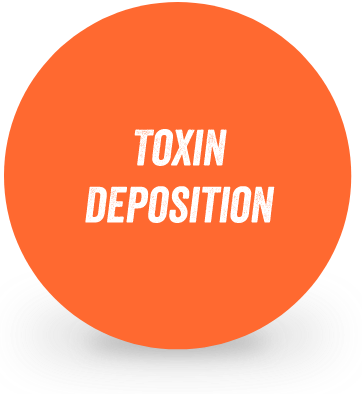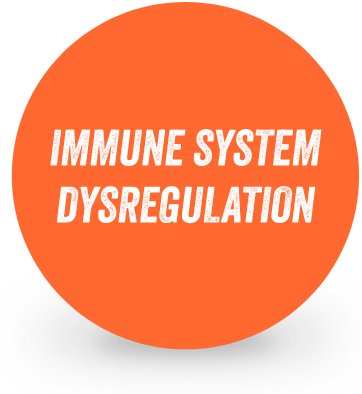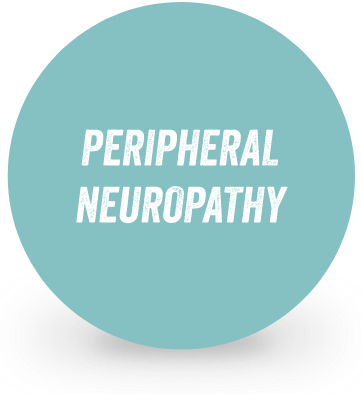The pathophysiology of CKD‑associated Pruritus may be multifactorial and could be affecting more of your patients than you realise.1,2
Pruritus in CKD patients has formerly been referred to as uremic pruritus, but as our understanding of the multifactorial pathogenesis of pruritus in CKD has developed, the term CKD‑associated Pruritus is now being used.1,3
In the general population, Pruritus is often an uncomfortable, yet fleeting sensation. But for patients with advanced CKD or on haemodialysis, Pruritus can persist, dramatically affecting quality of life.1,2,4–6
Despite over 50 years of research, CKD‑associated Pruritus remains underreported and undertreated.1,2
of all patients in the
DOPPS study reported
being bothered
by itching*2
of all patients in the
DOPPS study reported
being moderately to
extremely bothered
by itching2
of Medical Directors
included in the DOPPS
study underestimated the
prevalence of Pruritus in
their facilities7
*Figure calculated based on total patients reporting being somewhat-extremely bothered by itching.
CKD-associated Pruritus is an itch directly related to kidney disease without the presence of another comorbid condition to explain it.
What is CKD-aP?
Dr. Fishbane uses the latest research and DOPPS data to explain the variable clinical presentation, common prevalence and under-reporting of CKD-aP.
What causes CKD-aP?
Prof. Gallieni discusses the leading theories on the pathogenesis of CKD-aP, including toxin accumulation, peripheral neuropathy, immune system dysregulation and opioid receptor imbalance.
Dr. Steven Fishbane, MD
Dr. Steven Fishbane is the Chief of Nephrology of Northwell Health and a Professor of Medicine at the Zucker School of Medicine at Northwell.
With over 25 years of experience and 235 peer-reviewed publications, Dr. Fishbane is renowned for his work and advancement and innovation in the treatment of CKD patients.
Prof. Maurizio Gallieni
Prof. Maurizio Gallieni is Associate Professor and Director of the School of Nephrology at the University of Milano, Italy. He graduated and trained at the University of Milano and Verona, Italy, and as a Research Fellow at Washington University in Saint Louis, MO, USA.
Prof. Gallieni’s research interests include: clinical nephrology, CKD and dialysis, CKD-mineral and bone disorders, dialysis access, onco-nephrology, glomerular diseases and simulation training in interventional nephrology. He is Coordinating Editor of the Journal of Vascular Access and has authored 285 publications indexed in PubMed (H index: Scopus:33).

Pathophysiology of CKD-associated Pruritus
Research suggests that the pathophysiology of CKD-associated Pruritus is multifactorial and is likely caused by toxin deposition, opioid dysregulation, immune system dysfunction and peripheral neuropathy.1
CKD-associated Pruritus is also referred to as uremic pruritus. This is because an initial theory of CKD-associated Pruritus pathophysiology implicated “uremic toxins” including vitamin A, aluminium, calcium, phosphorus, and magnesium. This theory was based on several early observations:
- The association of CKD-associated Pruritus with underdialysis and with higher calcium, phosphorus, and parathyroid hormone (PTH) levels
- The improvement in CKD-associated Pruritus prevalence rates over time
- Improvements in pruritus after treatment of high calcium, PTH, and phosphorus levels, including with parathyroidectomy
It is currently thought that underdialysis and toxin deposition may cause CKD-associated Pruritus in a subset of patients. In these patients, management of CKD-associated Pruritus should focus on optimisation of haemodialysis in order to achieve Kidney Disease: Improving Global Outcomes (KDIGO) goals for Kt/V, calcium, phosphorus, and PTH.
The opioid pathway, with receptors located in the brain, peripheral nerves, keratinocytes, melanocytes, hair follicles, and immune cells, has been increasingly recognised as an important modulator of itching. This theory of CKD-associated Pruritus pathophysiology suggests that overstimulation of central mu-opioid receptors, antagonism of peripheral kappa-opioid receptors, or an imbalance of stimulation and antagonism of mu- and kappa-opioid receptors causes itching.
This theory of CKD-associated Pruritus pathophysiology suggests that microinflammation in the skin and possibly systemic inflammation stimulate itching. Higher levels of inflammatory markers are seen in haemodialysis patients, including T-helper 1 cells, C-reactive protein, interleukin-6, and interleukin-2, support this theory. Furthermore, CKD-associated Pruritus is associated with high white blood cell counts, low albumin and high ferritin levels. The allergic response may also be dysregulated in CKD-associated Pruritus. Increased levels of eosinophils, mast cells, in addition to histamine and tryptase, have been found in patients with CKD-associated Pruritus.
Neuropathic itching is thought to result when primary afferent sensory neurons or interneurons are activated out of proportion to or independent of any detectable causative substances (such as toxins). This theory is supported by observation of a high prevalence of peripheral sensorimotor neuropathy and dysautonomia in haemodialysis patients, which may explain their itching. Furthermore, haemodialysis patients with paraesthesia and restless leg syndrome more frequently have CKD-associated Pruritus.

Vitamin A, aluminium,
calcium, phosphorus,
magnesium1

and kappa-opioid receptor activity
Overstimulation
of mu-opioid receptors
Antagonism of kappa-opioid receptors1

Skin microinflammation Allergy: eosinophils, mast cells, histamine
C-reactive protein, interleukin (IL)-6, IL-2, white blood cells, ferretin1

Abnormal skin innervation and nerve conduction1
Have you only scratched the surface
of CKD-associated pruritus?
Watch this video for an overview of CKD-aP, including the burden on patients, comorbidities, pathophysiologies and current treatment strategies.

CKD patients undergoing haemodialysis already have a poor quality of life, which is exacerbated
by CKD-associated Pruritus.4–6 Uncover how CKD-associated Pruritus could be affecting your haemodialysis patients’ sleep quality, social relationships and mental health.
- Verduzco H, Shirazian S. CKD-associated pruritus: new insights into diagnosis, pathogenesis, and management. Kidney Int Rep. (2020);5(9):1387–1402.
- Sukul N, Karaboyas A, Csomor P, et al. Self-reported pruritus and clinical, dialysis-related, and patient-reported outcomes in hemodialysis patients. Kidney Medicine. (2020);3(1):42–53.e1.
- Patel T, Freedman B, Yosipovitch G. An update on pruritus associated with CKD. Am J Kidney Dis. (2007);50:11–20.
- Ramakrishnan K, Bond TC, Claxton A, et al. Clinical characteristics and outcomes of end-stage renal disease patients with self-reported pruritus symptoms. Int J Nephrol Renovasc Dis. (2013);7:1–12.
- Shirazian S, Aina O, Park Y, et al. Chronic kidney disease-associated pruritus: impact on quality of life and current management challenges. Int J Nephrol Renovasc Dis. (2017);10:11–26.
- Tsai YC, Hung CC, Hwang SJ, et al. Quality of life predicts risks of end-stage renal disease and mortality in patients with chronic kidney disease. Nephrol Dial Transplant. (2010);25:1621–1626.
- Rayner H, Larkina M, Wang M, et al. International comparisons of prevalence, awareness, and treatment of pruritus in people on hemodialysis. Clin J Am Soc Nephrol. (2017);12:2000–2007.
























